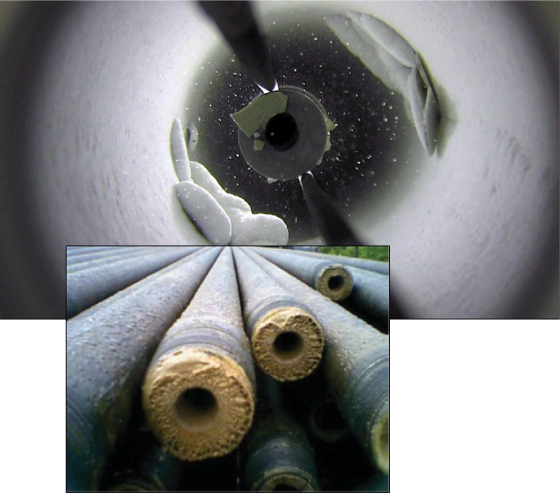
Hard Scale Removal from hydrocarbon or water wellbores
Utilizing its experience with laser applications in the wellbore environment, Zerlux has started to develop a cost-efficient and environmentally safe technology for laser removing of hard scaling that became most critical problems in petroleum Upstream. The hard scaling in the deep environments may jeopardize or completely inhibit the free fluid in-flow from oil or gas formations to the wellbore. The aimed to improve technology may support Upstream producers to avoid or reliably abolish deleterious formulating hard scale barriers at the perforation in wellbore that often result complete stop of production. The technology is under development in TRL 3 level (Experimental proof of concept). Zerlux is looking for funding and industrial partners!
Hard Scale problem is one of the most significant cost-increasing factors during the life of any producing well causing billions of US dollar extra cost per year for the operators. Exotic scales (barite, iron sulfide, zinc sulfide, etc.) are very expensive and practically impossible to remove with mechanical milling, chemicals or jetting.
Zerlux Laser Hard Scale Removal tool could physically and chemically degrade any kind of hard scale effectively without damage to the production tubing or casing.
As Zerlux has already proved the technological concept of this method, with preparation a lab prototype tool and also performed tons of lab testing on different types of hard scaling, so, in order to finalize labtests and step into industrial level of manufacturing, Zerlux is searching for industrial/financial partner with purpose of ultimate realization and completion the development of this unique project!
How does it really works?
Global annual cost related to hard scaling problems reached 4-5 Bn USD. Typical and widely known hard scale like barite is indissoluble in water and needs for other hazardous chemicals to break down. Barite scale is typically resistant for fluid jetting, while conventional mechanical milling removal technology generates random sized cuts that can lead to insufficient mud circulation and finally to BHA stucking. Due to barite hardness, it is itself difficult to mill mechanically without causing accidental damage in tubings or casing during operation. In the most of cases, anly the sidetrack drilling is the alone reasonable solution although it is extremely expensive and time-consuming procedure.
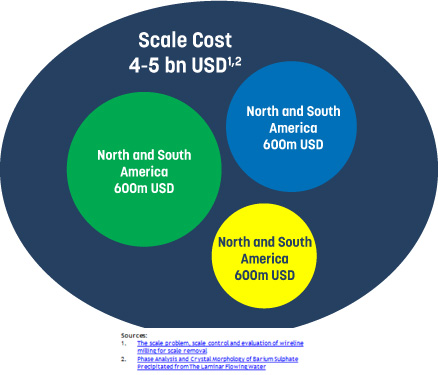
Chemical Method
With utilization of the laser light the barite hard scale can be broken down through both thermal and physical treatments. The laser light can easily heat barite (BaSO4) up to 1300-1600°C where barite will be melted, simultenously generating Barium Oxide (BaO) and Sulphur Oxide (SO). If water (H2O) also is present during the chemical reaction the balance equation will result water-soluble Barium Hydroxide (Ba(OH)2) that may be washed out with water flow.
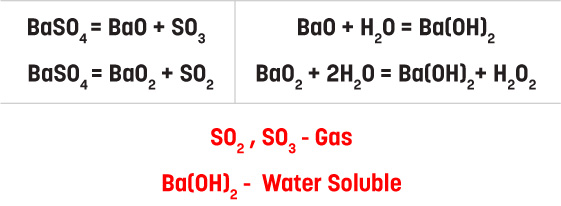
Physical Method
During widely used mechanical milling of rigid barite hard scale the size and shape of the debris can vary in a wide range that can cause serious build up on the top of BHA resulting tool's stuck. Instead of having direct mechanical contact, high-power laser ray can physically break down barite hard scale by a heat shock spalling creating small sized cuttings that can be easily circulated and washed out with fluid flow even from extreme well-depth.
Laboratory Tests
Zerlux R&D team collected natural barite hard scale samples and created hundreds of artificial barite capsules with a wide range of chemical composition added barite, gypsum, calcite and quartz. Laser-rock interactions, chemical processes, speed of progress and other important features were studied. Afterward Zerlux built a prototype hard scale removal (movable and directable) head in order to perform barite scale removal from the inner side of industrial used tubing or directly from perforation of in-flow channels.
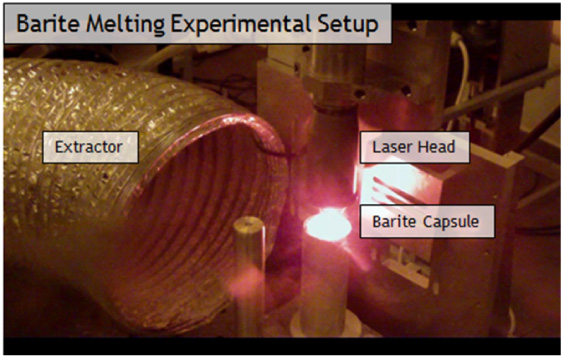
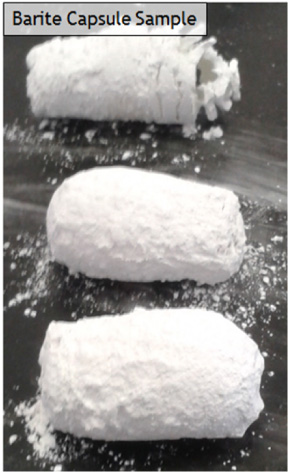
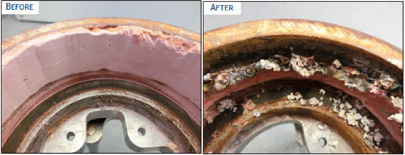
Results, Advantages
- Over three-year-history of R&D, hundreds of different types of hard scale samples were treated by laser, studied and analyzed;
- Conceptual prototype laser head has been tested within 100 bars (1,450 psi) 50°C (122°F) environment;
- Size of the cuttings vary between mm to sub mm scale drastically reducing the risk of debris build-up on the top of BHA;
- Experimental tests and checking calculations showed that operational progress even within industrial environment could be achieved;
- The laser did not damage tubing surface at all, moreover 100 microns thick hardened layer was observed and measured on the surface of the steel directly under the removed barite scale;
- Laser is a direct contact-free hard scaling removal technology so Weight On Bit is much less compared to conventional mechanical milling technologies. The lighter deployment with coiled tubing services also can be applied;
